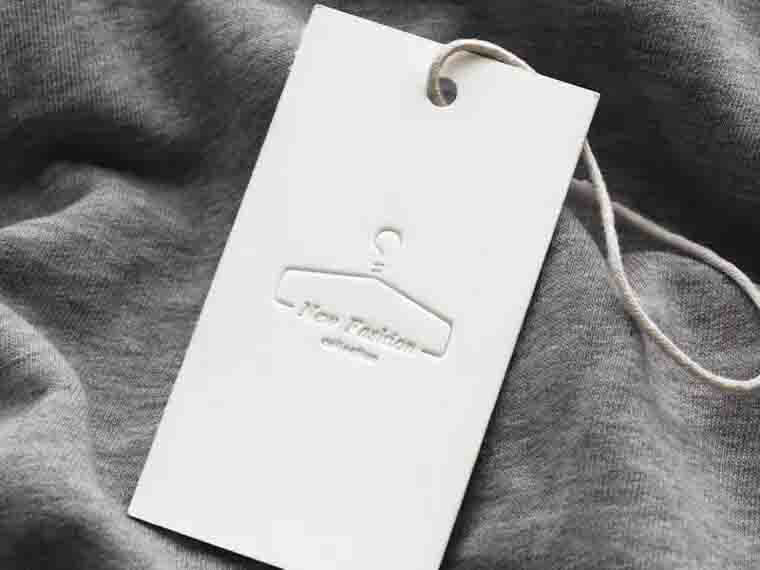Nowadays, many clothing companies are using RFID to realize automatic management from manufacturing to retailing. Then how RFID works during the whole supply chain?
Almost all RFID apparel tags are using UHF (ultra high frequency) because it’s anti-collision. Multiple tags could be detected within few seconds from a long distance.
Besides, each RFID chip has a unique identifier inside which cannot be changed or copied, therefore, if using an RFID tag for the product, the consumer can use this unique identifier to check whether the product they bought are authentic, then to realize anti-counterfeiting even in global market.
Nexqo provides 6 different types of RFID apparel tags, check their characteristics below and get the most suitable one for your application.
Washable (limited washes only) – 4 types
1. RFID heat transfer label
RFID heat transfer label is produced under the combination of silver ink antenna with heat transfer printing technology. Patterns and characters are pre-printed on the film of the label, with using heat press machine, elegant patterns could be transferred onto the clothes’ surface under pre-set heat. The clothes and the inks would be merged as one after shaped, which will look distinctly and very beautiful.
Application:
Apparel, shoes, bedding, bags and suitcases, etc.
Advantages:
Patterns and characters could be transferred easily onto the product with a regular heat press machine;
Different sizes are available upon request;
Different colors and printings are available upon request.
2.RFID Woven Label (RFID Heat Transfer Label inside)
RFID woven label is produced by interweaving of different colors of thick or thin warp and woof. Woven labels give an elegant pattern, soft hand-touching and permanent unfading colors even after numerous washes. The heat transfer label is ironed to woven and then the adhered TPU film is removed.
Application:
Apparel, footwear, bedding, bags and suitcases, etc.
Advantages:
Missing labels will be greatly decreased because this woven label is directly sewed inside the product;
Soft label gives a comfortable wearing experience;
Helps to establish a high class brand image;
Enhancing market competitiveness for brands;
Strengthening consumer’s credit ability, facilitating sales promotio
3.RFID Nylon /Satin Label (RFID Heat Transfer Label Inside)
Embedding an RFID heat transfer label inside the nylon tapes or polyester ribbons, which made it an RFID nylon label.
The soft texture fulfils the basic washing requirements for apparels. Its characteristic lies in the possibility of direct adherence after ironing of the RFID heat transfer label onto fabric surface and becomes part of the textile material and difficult to be peeled off.
Application:
Apparel, footwear, bedding, bags and suitcases, etc.
Advantages:
Missing labels will be greatly decreased because this satin label is directly sewed inside the product;
Exclusive development technology that is highly difficult to be copied;
Multiple printing methods and personalized printing are available;
Available for different effects based on various washing requirements.
4.RFID Converting Label (RFID Inlay Inside)
RFID converting labels are usually found in pocket labels, ribbon or nylon tape sandwich converting labels. Generally, it’s laminating an RFID wet inlay with different tapes, and then go through the ultrasonic cut or cold cut process to form the final label. Material of the tape for sandwich converting label could be ribbon, nylon tape, polyester tape, woven edge ribbon, pearlescent ribbon, etc.
Roll form or single piece form are both available; for pocket label, the only material base can be ribbon in single piece form.
Application:
Apparel, bedding, bags and suitcases, etc.
Advantages:
Lower cost due to the wet inlay processing;
Wide application with little limitations, customized printing available;
Provides flexibilities to customers for printing and encoding on roll form sandwich converting labels.
Unwashable – 2 types
1.RFID Sticker
RFID sticker is widely used in apparel and other industries as packaging label. It’s formed from numerous types of basic materials like paper, thin plastic film or other special materials with adhesive on back and silicon protection paper as backing paper. Because of the adhesive on back, it can be adhered on commodities directly like size tag of apparels or the packing polybags.
Application:
Apparel, footwear, bedding, bags and suitcases, packaging sticker of master cartons for other industries.
Advantages:
Multiple base materials available, such as coated paper, gloss paper, art paper, PET sticker, PVC sticker, etc.;
Customized antennas are available upon request;
Customized printing artworks are available;
Personalized printing or encoding are available;
High tolerance to heat and moisture.
2.RFID hangtag
A – Roll form
RFID handtags are mainly made by paper with RFID inlay embedded in the middle. Roll handtags are normally printed with Flexo printing, which can be shown up with rich and beautiful colors on composition.
Application:
RFID apparel system.
Advantages:
Personalized information such as logo, brand, size, style number, barcode, etc. are available for printing with an RFID digital printer;
Lower cost due to easier production procedure;
Widely used in the market since some customers need to print and encode the tags by themselves.
B – Single Piece Form
RFID handtag in single piece form, is mainly made by paper with RFID inlay embedded inside. Offset printing and digital printing are both available for this tag to present beautiful and rich colors.
Application:
RFID apparel system
Advantage:
Personalized information such as logo, brand, size, style number, barcode, etc. are available for printing with an RFID digital printer;
Lower cost due to easier production procedure;
Customized sizes and shapes are available upon request.
Contact us to customize your RFID apparel tag now.
